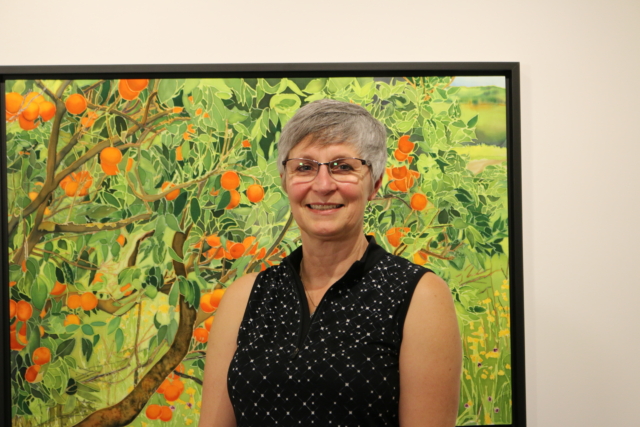November 1, 2023
Patti LeBlanc, of Winnipeg, didn’t think that lifting a crockpot would send her into an ambulance. But on December 22, 2015, that’s just what happened.

LeBlanc, 49, was loading up her car for a church potluck when she was hit with alarming sensations. She felt as though an elephant was pressing on her chest, her chin was sore, and she had pain in her jaw. Suddenly, her left arm started tingling. “I started thinking the worst about what this could be. I didn’t know the signs of a heart attack,” said LeBlanc. “At my age, why would I?”
A runner who was training for an ultra marathon, she didn’t fit the typical stereotype for a heart attack. However, knowing that something was wrong, she told her husband to call 911. The ambulance arrived within minutes. The paramedics immediately did an ECG to see the rhythms of her heart and confirm if she was in danger. Both the ECG and the on-call cardiologist at St. Boniface Hospital confirmed that she was indeed having a heart attack, and she was rushed to the Cardiac Catheterization Lab.
Reflecting on her experience, LeBlanc remembers how quickly and seamlessly everything happened from the moment her husband dialed 911 to her recovery. As she arrived from the ambulance for her angiogram test, she recalls the elevator doors opening to her care team ready, scrubbed in, and waiting. “It really felt like the best treatment. It felt so smooth and efficient,” LeBlanc recalls. “Everyone had a job to do, but they still took the time to make sure I was comfortable and calm.”
LeBlanc was diagnosed with spontaneous coronary artery dissection (SCAD), which had caused two tears that led to her heart attack. SCAD survivors, mostly women, are at special risk for future cardiac events and complications, which means recovery is unique and complex. LeBlanc saw this unique care first-hand during her recovery at St. Boniface Hospital. “The care was so tailored to me as an individual. I felt like I had autonomy and the ability to do things for myself.”
LeBlanc unfortunately couldn’t make it home in time for Christmas morning. Nonetheless, the care team at St. B went above and beyond, leaving Christmas chocolates on pillows for patients. That small act of kindness stands out to LeBlanc as a meaningful testament to how special the care team was.
“I was told as a SCAD survivor to take everything slowly, and to breathe,” said LeBlanc. She knows how close she came to death. Today, she makes sure to cherish every moment. Each year, on the day of her heart attack, she reflects on what she was able to accomplish in the past year, including these in a letter to her care team.
“I want them to understand that because of their care, I’m still here. Because they saved my life, I was able to celebrate my granddaughter’s first birthday. I was able to get back to running and doing what I love.”
St. Boniface Hospital’s redeveloped Emergency Department will save more lives, like Patti’s, when it opens in 2025. Make a gift today and show your commitment to critical cardiac care.


